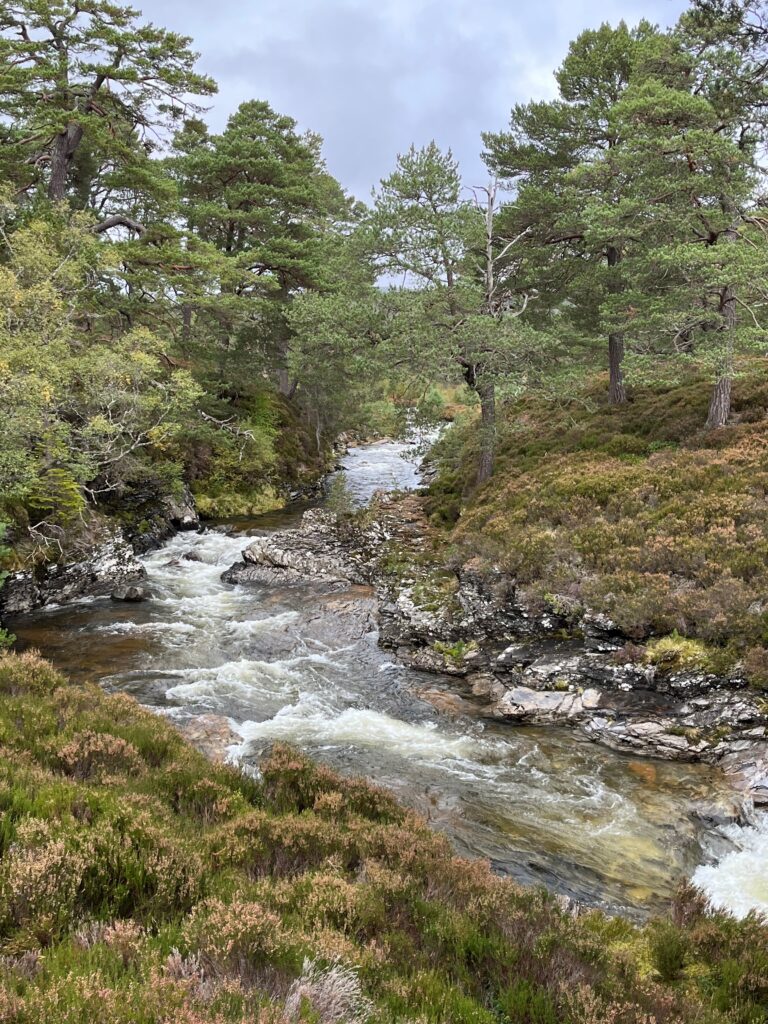Bodies of freshwater vary hugely, from trickling streams to roaring rivers. They provide a rich habitat for a staggering range of wildlife. Everything from otters, kingfishers and freshwater shrimps rely on clean waterways. Although we might not notice much difference from the banks, no two sections of river are the same. These valuable habitats are under threat and face increasing pressure. Rising levels of pollution and reduced tree cover are just two of the challenges facing our waterways
Things to consider…
- Wild waterways support a huge range of wildlife! There’s a staggering amount of wildlife that relies on rivers. Mammals like otters and beavers live in and around rivers while deer and foxes will use local rivers to drink. Specialist hunters like kingfishers and herons will prey on any fish. A huge range of insects live in and around rivers, from diving beetles to dragonflies. Under the surface tiny nymphs and stickleback fish dart around while trout, salmon and pike hunt for their next meal.
- Rivers and waterways are part of a bigger system. Rivers can start from a spring or upwell at their source. Most rivers are also fed by a catchment. A catchment is a large area of land around the river. Rain falls across the area and runs from the surrounding catchment into the river.
- This makes waterways important and varied habitats but also makes them vulnerable. There are a huge number of factors that dictates what wildlife lives in any waterway. This can range from the surrounding landscape or the shape of the banks, to the nutrient levels of the water. However, being part of a larger catchment means they are vulnerable to change. Chemicals used several miles away can be devastating for a waterway.
- Pollution is a real issue. Pollution can seriously affect rivers and their surrounding ecosystems. Run off from roads and agricultural land carries excess sediment and harmful chemicals. These reduce the water quality and impact the wildlife that lives there.
- Invasive species don’t help. Non-native invasive species out-grow and spread diseases to beneficial native species. They can also predate native species. For example, native water voles are predated by the invasive American mink. American mink was introduced to the UK for fur farming. Water voles help to create the conditions for other wildlife to live through their movements, feeding and their burrows. Water vole populations have seen a huge decline. This is a direct result of habitat loss and predation by American mink.
- Trees make a big difference. They have a range of benefits on the waterways nearby. Trees like alder, birch and willow all thrive in damp areas like riverbanks.
- Trees provide shade which is reduces the water temperature. This benefits freshwater species like salmon. Salmon need cooler water temperatures to feed, grow and reproduce. Shade from trees also prevents algal blooms.
- Tree roots help stabilise riverbanks. If there is heavy rainfall, rivers can burst their banks. This causes flooding. Tree roots help make the riverbanks more solid. In turn, this reduces the chances of the river bursting its banks and causing flooding.
- Trees create a buffer zone. This reduces the amount of run-off water that reaches the river when there is heavy rain. In turn this reduces the risk of flooding and high-water levels. Another benefit of a buffer zone is that chemical run-off is also less likely to reach the waterway. Chemicals from farms and industrial areas can easily get swept into rivers by heavy rain.
- A healthy river means a healthy community. Healthy waterways are great for us as well as wildlife! They can offer somewhere to find some peace which is great for our wellbeing. A thriving river also reduces the risk of flooding during heavy rainfall. Just like other areas, always make sure you have the landowner’s permission before doing any work on a river!
Useful links


- There are a number of useful overview pages on the Wildlife Trusts website. The rivers habitat page is a good overview and provides some basic information. There is also a page on freshwater and wetland habitats. Finally, the freshwater page has an interesting section about the history of lakes and rivers.
- Riverwoods is a partnership is working to create a network of thriving riverbank woodlands and healthy river systems across Scotland. The partnership is led by the Scottish Wildlife Trust and is working with a wide range of organisations.
- The Forth Rivers Trust has some great information available including a form to report invasive species spotted in rivers along the Forth. They also offer consultancy services with a focus on river habitats and species. They may also be able to help with other habitats so if you are looking for a consultant, it’s worth getting in touch.
- The River Restoration Centre offer technical advice on river restoration and catchment management. They have some useful information on their website and offer bespoke advice and consultancy services. They offer support with project scoping to help identify opportunities for river restoration and defining a vision for your catchment. If you need some guidance with river conservation it’s worth getting in touch.
- The Freshwater Habitats Trust have a page on rivers. They also have information on freshwater plants and freshwater creatures.
